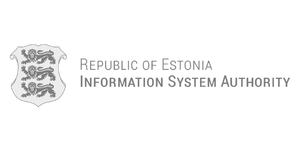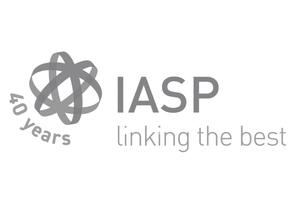01.06.2016
North Estonia Medical Centre: Aspiring to become a medical centre recognized across Europe
The North Estonia Medical Centre (NEMC) is Estonia’s top hospital. Its fundamental values are patient-centered care, professionalism, innovative thinking, and teamwork. NEMC’s aim is to be a leader in education, research, and development in medicine and healthcare.
Dr. Eduard Maron, director of Research and Development Services at NEMC, says that over the last five years the role of the hospital has broadened significantly: “We are moving in a direction where we are not only a medical institution but also an institution which is active in research. The Research and Development Services unit established at NEMC makes it possible to collaborate with universities and other hospitals. Research is our priority, and this branch of activity has successfully started to develop.
High-technology and innovative treatment methods are being employed at NEMC. Treatment in supporting functions and administration is also innovative.
According to Maron, specialists with the best knowledge and skills work at NEMC: “At our hospital there are at least 35 people with a doctorate degree. This means that we have a relatively large team which has been and will continue to be involved in scientific studies
and research. We have professionals in every area.”
“Our mission is to be the number one hospital in Estonia and a leading medical centre in Europe. I believe it is possible when considering the strengths of our team and its potential. We are the largest hospital in Estonia, and this is an advantage we should certainly avail ourselves of,” says Maron.
Collaboration leads to success
NEMC’s vision is that it is beneficial to develop solutions which help doctors in their everyday work. Using structured databases, for example, saves a large amount of time. If the doctors explain what kind of start-up or database the hospital needs, the IT team is responsible for developing the solution.
“Estonia does indeed have a very strong IT sector, but a problem lies in the fact that solutions often rely on the Estonian ID card, which is too localized. We cannot sell these solutions outside of Estonia. Our vision is to develop solutions that can be implemented here on the local market and, at the same time, sold abroad. Right now we are far from realizing this vision. For this reason we must unite our strengths and strategies with local partners. Nowadays we do not aspire to achieve success alone. We are effectively launching more projects because that we are open to collaboration,” Maron says.
According to Maron, the Connected Health Cluster makes it possible to find projects coinciding with NEMC’s interests. “We expect to achieve better results when working in collaboration on projects. It is always easier to find financial and human resources in cooperation with a reliable partner. Human resources is a very important topic for us, since doctors are not able to deal with projects on their own alongside their clinical work. This problem is solved if we are able to find partners for cooperation.
I am happy that the cluster exists and connects us with new people. I see that these partners are very professional and interesting,” Maron says.
Now that NEMC has joined the cluster, we have found a partner for our new idea: we are developing a solution that is aimed to ensure the quality of diagnoses in psychiatry. This would ensure that the given diagnosis is accurate and criteria-based. In addition, we are trying to develop a solution which would help doctors treat a patient according to the diagnosis. What must be done, for example, if side effects arise or there is no therapeutic effect? Basically, it is electronic health record system in the field of psychiatry.
Innovative solutions are difficult to find
In recent years NEMC has focused on the topic of innovativeness: “Research and Development Services deals at the moment with several projects. On the reasearch side everything is OK. In terms of science, everything goes well: we have different projects and articles we are working on; the doctors are focused on research. In terms of technical development and innovation, we have had some difficulties: there is a lack of powerful vision in determing whether our product is the best one and whether it might be of interest to others,” NEMC Research and Development Services is trying to understand how to improve the situation, how to improve the efficacy of innovation efforts.
“The problem lies in the fact that not all our doctors are committed to innovation in their everyday work. On the one side, universities are interested in cooperation but expect the hospital to initiate ideas. NEMC, in turn, expects the ideas to originate from the university. As a result, nothing gets done,” Maron describes the problem.
Over the course of his career Maron has worked in Finland and England, admitting that Estonia should learn from these countries: “The system is different: before becoming doctors, students are already motivated to do research, to think productively with innovation in mind. The students are very active and certain that their career choice is interesting. In Estonia, we have some motivational problems – I would like to see more motivated people, particularly among young people”.
A sore point in Estonia is the funding of science. “In England, the principle holds that if you are not successful in science, you will not get any money. If the same holds true in Estonia ten years from now, a new generation of people will begin to emerge, a generation which wants to be involved in science because they see a career possibility in it. The creation of this system will, however, take time,” Maron explains.
The development potential in Estonia is of particular interest to Maron: “The problem lies in the fact that not all our doctors are committed to innovation in their everyday work. On the one side, universities are interested in cooperation but expect the hospital to initiate ideas. NEMC, in turn, expects the ideas to originate from the university. As a result, nothing gets done.”
“I would like to have a team that is known abroad and that is able to contribute to the overall image of NEMC. I want other countries to consider us as exciting and strong hospital. If in the end there are 10-15 people who are outstanding on a global level, then we have achieved our goal,” Maron states.

















